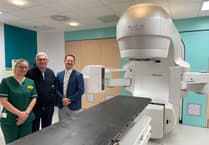Archaeologists have discovered remarkable Bronze Age findings at Taylor Wimpey’s Alresford Down development in New Alresford.
An extensive excavation, led by environmental consulting group RPS and archaeological consultants PCA Winchester, has found a treasure trove of historical significance, shedding light on the rich heritage of the site and the wider landscape.
The investigation, which began in July 2023, has revealed the remains of a Bronze Age (2300 BC to 800 BC) barrow cemetery and one of the largest Anglo-Saxon cemeteries discovered in Hampshire, with over 120 graves identified dating back to the 7th century AD.
Located high on Tichborne Down and overlooking the River Alre, the three barrows, initially discovered in 2015 through trial work prompted by an aerial photograph taken in 1968, have yielded invaluable insights into the previous populations that once thrived in the area.
The RPS team will now create a formal report documenting the historical significance of these discoveries, ensuring their lasting record in the area’s history, contributing to a deeper understanding of our cultural heritage. The archaeological findings will also be exhibited at the Winchester Museum.
Interested parties are encouraged to come forward with relevant information and if no claims arise, the artefacts will be respectfully reinterred.
Matthew Smith, director of archaeology and heritage at RPS, said: “The archaeological findings at Alresford Down are nothing short of extraordinary. Unearthing the remains of a Bronze Age barrow cemetery and a vast Anglo-Saxon burial ground has provided a rare opportunity to piece together the rich history embedded in this site. We are proud to contribute to the preservation of our shared past through this remarkable excavation.”
Katie Brandham, technical director for Taylor Wimpey Southern Counties, said: “We are humbled by the historical treasures unearthed at Alresford Down. The discoveries offer a unique window into the lives of those who lived here centuries ago. We are committed to working closely with the archaeological teams and local authorities to ensure these findings are preserved prior to any building.”
The three barrows unearthed, identified by the surviving quarry ditch provide a glimpse into Bronze Age burial practices, with two urned cremation burials and two crouched inhumation burials linked to the initial use of the barrows. Unfortunately, some burials and the barrow mounds were lost to modern ploughing.
Notable among the discoveries is the poorly preserved skeleton of a young woman buried with a rare gold disc pendant and adorned with intricate gold filigree forming a cross shape.
Many of the other graves included small iron knives, while one was buried with a sword.
The burial pattern showed that almost all graves aligned east-west, placing the head at the west end.
The cemetery’s organisation is clear and evident in limited instances of overlapping graves and distinct rows as captured in the aerial view of the excavation.
All works are being undertaken under the help and guidance of the Winchester District Archaeological Advisor Tracy Matthews, and the site will feature on Digging for Britain on BBC 2 at 8pm on Wednesday, January 3, showcasing the historical significance of the site and the significant treasures uncovered in its archaeological excavation.
With archaeological investigations now complete and the findings recorded and preserved, Taylor Wimpey has been given clearance to start enabling works on site ready for its launch in spring 2025.
Taylor Wimpey plans to commemorate the historical findings on the site by proposing the installation of a plaque or information board in the public open space, pending approval from Winchester City Council.
To find out more information about the development, visit https://www.taylorwimpey.co.uk/new-homes/winchester/alresford-down



